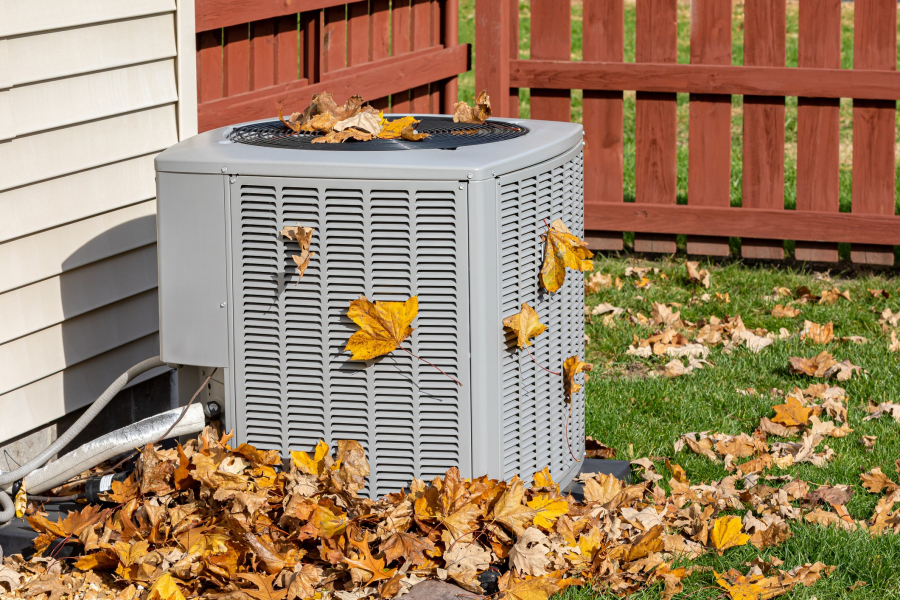
Traditional HVAC systems (Heating, Ventilation, and Air Conditioning) are essential components of modern homes, providing comfort and ensuring optimal indoor air quality. These systems regulate temperature, humidity, and air purity, making them crucial for both health and comfort. As technology advances, homeowners are faced with a variety of HVAC options, each with its own set of benefits and considerations.
Choosing the right HVAC system for your home is a decision that should not be taken lightly. The system you select will impact your energy bills, environmental footprint, and overall comfort. Whether you opt for a traditional HVAC system or explore the advantages of ductless alternatives, it's important to understand the differences and determine which solution aligns best with your needs and preferences.
About Traditional HVAC Systems
Traditional HVAC systems have been the standard in home climate control for decades. These systems are characterized by their centralized approach to heating and cooling, utilizing a network of ducts to distribute conditioned air throughout a building.
A traditional HVAC system typically consists of a furnace or boiler for heating, an air conditioner for cooling, and a series of ducts that carry the conditioned air to various rooms. Additionally, these systems include thermostats for temperature control, air filters to remove contaminants, and vents or registers to manage air flow.
In a traditional HVAC setup, the furnace or boiler heats air or water, which is then circulated throughout the home to provide warmth. During warmer months, the air conditioner takes over, removing heat and humidity from indoor air and releasing it outside. The entire process is controlled by a thermostat, which maintains the desired temperature by turning the heating or cooling components on and off as needed.
Pros and Cons of Traditional HVAC Systems
Traditional HVAC systems offer several advantages, including:
- Uniform Temperature Distribution: Thanks to the extensive ductwork, these systems can maintain a consistent temperature throughout the entire home.
- Proven Reliability: With decades of use, traditional systems have a track record of dependability.
- Compatibility: They can be easily integrated with existing ductwork in older homes.
However, there are also some drawbacks to consider:
- Energy Efficiency: Traditional systems can be less energy-efficient than ductless options, leading to higher utility bills.
- Installation and Maintenance: The extensive ductwork requires significant space and can be costly to install and maintain.
- Air Quality: Ducts can accumulate dust and allergens, which may affect indoor air quality if not regularly cleaned.
About Ductless HVAC Systems
Ductless HVAC systems, also known as mini-split systems, have gained popularity in recent years as a flexible and energy-efficient alternative to traditional systems. These systems do not require ductwork, making them ideal for homes without existing ducts or for targeting specific areas for heating or cooling.
A ductless system consists of an outdoor compressor/condenser unit and one or more indoor air-handling units. These indoor units are mounted on walls or ceilings and are connected to the outdoor unit via a small conduit that houses the power cable, refrigerant tubing, and condensate drain. Each indoor unit operates independently, allowing for zoned temperature control.
Ductless systems operate on a simple principle: the outdoor unit compresses and cools refrigerant, which is then pumped to the indoor units. These indoor units use a fan to blow air over the cold coils, cooling the room. For heating, the process is reversed, with the outdoor unit absorbing heat from the outside air and transferring it indoors. The absence of ducts minimizes energy loss, making ductless systems highly efficient.
Pros and Cons of Ductless HVAC Systems
Ductless systems offer several advantages:
- Energy Efficiency: With no ducts to lose energy, ductless systems are often more efficient than traditional systems, leading to lower utility bills.
- Flexible Installation: The compact size and lack of ductwork make these systems easy to install in various locations, including older homes and additions.
- Zoned Comfort: Individual controls for each indoor unit allow for personalized temperature settings in different areas of the home.
However, there are some drawbacks to consider:
- Initial Cost: Ductless systems can be more expensive to install initially, especially if multiple indoor units are required.
- Aesthetic Impact: Indoor units are visible and may not blend seamlessly with all interior designs.
- Maintenance: Each indoor unit requires its own maintenance, which can add up over time.
Comparing Ductless and Traditional HVAC Systems
When deciding between ductless and traditional HVAC systems, it's important to consider various factors, including energy efficiency, installation and maintenance, costs, and suitability for different home layouts and needs.
Energy Efficiency Comparison
- Ductless systems are generally more energy-efficient than traditional systems due to the lack of ductwork, which can result in significant energy loss in traditional systems.
- Traditional HVAC systems can be less efficient, especially if the ductwork is old, leaky, or not properly insulated.
Installation and Maintenance Differences
- Ductless systems are easier and quicker to install, as they do not require extensive ductwork. Maintenance is also simpler, with regular cleaning of filters and occasional checks of the outdoor unit.
- Traditional HVAC systems require more involved installation, particularly if ductwork needs to be added or modified. Maintenance can be more complex due to the need to clean and inspect ducts, in addition to the regular maintenance of the furnace and air conditioner.
Cost Analysis: Upfront and Long-Term Expenses
- Ductless systems can have a higher upfront cost, especially if multiple indoor units are needed. However, their higher energy efficiency can lead to lower operating costs over time.
- Traditional HVAC systems may have a lower initial installation cost, especially if the home already has ductwork. However, their lower energy efficiency can result in higher long-term expenses.
Suitability for Different Home Layouts and Needs
- Ductless systems are ideal for homes without existing ductwork, smaller homes, or homes with specific areas that need targeted heating or cooling. They are also well-suited for additions or conversions where extending ductwork is impractical.
- Traditional HVAC systems are better suited for larger homes with existing ductwork, where a centralized system can efficiently provide uniform heating and cooling throughout the entire space.
Ultimately, the choice between ductless and traditional HVAC systems depends on your specific needs, home layout, budget, and energy efficiency goals. Consulting with a professional, such as The Boiler Shoppe, can help you make an informed decision that aligns with your preferences and requirements.
Making the Right Choice for Your Toronto Home
Choosing the right HVAC system for your Toronto home is a decision that requires careful consideration of various factors.
Factors to Consider When Choosing Between Ductless and Traditional HVAC Systems
- Home Layout and Size: Consider the layout and size of your home. Ductless systems may be more suitable for smaller homes or specific areas, while traditional systems might be better for larger homes with existing ductwork.
- Energy Efficiency Goals: If reducing your carbon footprint and lowering energy bills are priorities, ductless systems tend to be more energy-efficient.
- Aesthetic Preferences: Think about how the appearance of indoor units or vents will fit with your home's interior design.
- Budget: Evaluate your budget for both upfront installation costs and long-term operating expenses.
The Importance of Professional Assessment and Installation
The importance of a professional HVAC assessment and proper installation cannot be overstated when choosing the right system for your home. Factors such as insulation, windows, and existing infrastructure play a crucial role in this decision. Ensuring that your HVAC system is installed correctly by an experienced technician is key to its efficiency and longevity, guaranteeing peak performance.
This is where The Boiler Shoppe steps in to assist you in making an informed decision. Our team of qualified engineers will conduct a detailed analysis of your home, considering heat-loss calculations to maximize fuel savings and environmental benefits. Committed to environmentally friendly solutions, we aim to guide you towards an HVAC system that aligns with your goals for a greener home. Our pledge to exceed expectations in customer service, installation, training, and after-sales service means that you will have support throughout the decision-making process and beyond.
Your Path to a Greener, Happier Home
Selecting the right HVAC system for your Toronto home is a crucial decision that impacts not only your comfort but also your energy bills and environmental footprint.
The Boiler Shoppe is here to guide you through this decision-making process, offering personalized advice tailored to your specific needs and goals. Our team of experts is dedicated to helping you achieve a greener, happier home with the most suitable HVAC solution.
Ready to take the next step towards a more comfortable and sustainable home? Contact The Boiler Shoppe for a comprehensive consultation. Our 24/7 customer service and unwavering commitment to exceeding expectations ensure that you'll receive the support and expertise you need, every step of the way.
Let us help you make the right choice for your home's heating and cooling needs.
